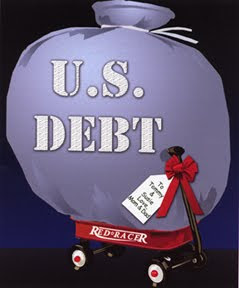In campaign finance law,
soft money is money donated to political parties rather than directly to candidates for public office. (Note: the latter kind of donation is, fittingly enough, dubbed
hard money, and has traditionally faced far more numerous regulations than soft money.) In practice, campaign finance regulations were scarcely ever enforced until about 40 years ago, and since then the legislative history of the subject has, in essence, been one of struggle between increasingly regulatory Congresses and increasingly deregulatory courts.
A quick review of legislation regulating campaign finance…The Tillman Act of 1907 constituted the first federal campaign finance law. It prohibits corporations from issuing direct contributions to national political campaigns and, interestingly,
was recently challenged in federal court as infringing upon corporations’ rights to political speech as articulated in the landmark contemporary decision
Citizens United v. FEC (2010).
The Federal Corrupt Practices Act of 1910 (FCPA) informed the nation’s longstanding pre-Watergate campaign finance regime. Amended in 1911 and 1925 to strengthen disclosure of all sums spent or donated in excess of $100, it was the first legislation to impose reporting standards and spending limits on federal campaigns. The U.S. Supreme Court upheld FCPA’s spending limits in
United States v. Classic (1941), but stated that Congress’ power to regulate spending in primary elections applied only in specific cases. The national parties and wealthy donors found skirting FCPA regulations remarkably easy, setting up multiple committees and spending money in sums under $100 at a time to evade disclosure requirements.
The Federal Election Campaign Act of 1971 (FECA) was enacted to repeal and replace the poorly enforced FCPA. In its initial incarnation, FECA merely sought to streamline disclosure requirements. It contained no contribution limits until amended in the post-Watergate transparency frenzy of 1974. Those amendments required candidates to disclose sources and sums of contributions over $200 and nearly all significant campaign expenditures, created the
Federal Election Commission, and established a limited public financing “matching funds” scheme for presidential candidates. FECA also placed strict limits on campaign spending and individual contributions, and prohibited donations from corporations, labor unions, national banks, government contractors, and foreign nationals.
The Supreme Court charted a moderate course with regard to the amended FECA in
Buckley v. Valeo (1976), upholding contribution limits, public financing (funded by a voluntary $3 donation on individuals’ annual tax forms), and disclosure standards
BUT striking down limits on campaign expenditures, stating that candidates for office retain their own freedom of speech. This arrangement stood mostly unchanged until the passage of the
Bipartisan Campaign Reform Act (2002).
Better known as
McCain-Feingold, this legislation was a major revamp of FECA that for the first time imposed stiff regulations on soft money and relaxed contribution limits for candidates being severely outspent by personally wealthy opponents (the so-called “millionaire’s amendment”). McCain-Feingold also prohibited the broadcast of issue advocacy ads naming a candidate within 60 days of a general election or 30 days of a primary election.
In recent years, the Court has again shaken this recent status quo by overturning McCain-Feingold’s time-triggered issue ad prohibition in FEC v. Wisconsin Right to Life (2007), its millionaire’s amendment provision in
Davis v. FEC (2008), and its limits on corporate and union independent political expenditures – spending on political speech unrelated to direct candidate endorsement, which is still illegal under the Tillman Act – in Citizens United.
President Obama and reformist interest groups like
Common Cause have since denounced the Citizens United ruling as an open invitation for corporate money to flood the electoral process, while pro-business organizations and free speech groups like the American Civil Liberties Union have tended to support the Court’s recent tack. In the early 2010s, the issue of campaign finance reform – of balancing anti-corruption priorities and the cause of perceived fairness with the interests of free political participation – thus stands at something of a political crossroads.









